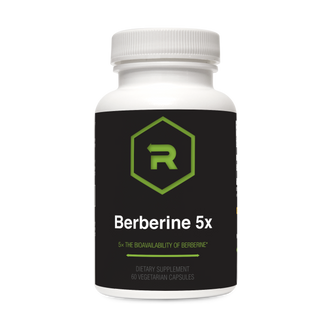Comprehensive Integrative-Medicine Approach to Raising HDL (“Good”) Cholesterol
1. Start with a Root-Cause Assessment
-
Advanced lipid panel: HDL-C, HDL particle concentration/size, Apo A-I, Apo B, Lp(a), oxidized LDL, hs-CRP, fasting insulin.
-
Metabolic & endocrine screen: thyroid (TSH, free T3), testosterone/estradiol, cortisol pattern, HbA1c, fasting glucose.
-
Gut-microbiome evaluation: dysbiosis can lower HDL via bile-acid and short-chain–fatty-acid pathways.
2. Foundational Lifestyle Pillars
| Pillar | Key Actions | Expected HDL Impact |
|---|---|---|
| Nutrition | Mediterranean or DASH pattern rich in extra-virgin olive oil, nuts, avocados, cold-water fish; < 5 % kcal from trans-fats; 25–30 g soluble fiber; ≥5 cups colorful vegetables daily | +5–10 mg/dL over 3-6 mo |
| Movement | 150 min/wk moderate-intensity cardio plus 2 sessions resistance training; consider HIIT blocks (≥80 % HRmax) | Aerobic exercise significantly raises HDL in middle-aged and older adults (Lippincott Journals) |
| Healthy weight | 5–10 % loss in overweight patients; avoid visceral adiposity | Each 1 kg loss → ≈1 mg/dL HDL rise |
| Sleep & circadian health | 7–9 h nightly, consistent bedtime, morning light exposure | Sleep debt lowers HDL via sympathetic activation |
| Tobacco & alcohol | Complete smoking cessation; limit alcohol to ≤1 drink/day (women) or 2 (men) | Quitting smoking can add 4–6 mg/dL |
3. Targeted Nutraceuticals & Botanicals (re-test liver enzymes every 8–12 weeks when indicated)
| Agent | Typical Dose | Mechanism / Evidence |
|---|---|---|
| Niacin-SR | 500 – 2,000 mg at bedtime, titrate | ↓Hepatic Apo-A catabolism; raises HDL by up to 30 % (Mayo Clinic) |
| Omega 1300 | 2–4 g/day (triglyceride-lowering dose) | Improves HDL particle size; net HDL change modest but favorable DHA-rich formulas may raise HDL |
| Resveratrol+ | 150–500 mg/day | Activates SIRT1 & PPAR-α; meta-analysis shows HDL elevation & TG reduction (MDPI) |
| Berberine 5x | 500 mg 2×/day | Up-regulates LDL-R & CETP inhibition; modest HDL increase, bigger TG/LDL drop |
| Artichoke-leaf extract | 600–1,200 mg/day | Cynarin enhances bile excretion, raises HDL 4–6 % |
| Curcumin Complex | 1,000 mg/day | Anti-inflammatory, improves HDL functionality (paraoxonase-1 activity) |
| Magnesium glycinate | 200–400 mg elemental | Cofactor for LCAT & Apo-A synthesis |
| Probiotic blend (L. plantarum, B. longum) | ≥10 B CFU/day | Alters gut bile-salt hydrolase; +2–3 mg/dL HDL in RCTs |
4. Hormone & Metabolic Optimization
-
Correct subclinical hypothyroidism: T3 replacement often lifts HDL 5–8 %.
-
Normalize testosterone (men) & balanced estrogen/progesterone (women): physiologic TRT can add 4–6 mg/dL.
-
Address insulin resistance: berberine, metformin, GLP-1 agonists—improving insulin sensitivity indirectly improves HDL.
5. Physical Modalities & Stress Resilience
-
Infrared sauna (20 min, 3–4 ×/week) increases HDL and endothelial NO.
-
Cold exposure (contrast showers, cryotherapy) stimulates brown-fat fatty-acid oxidation, small HDL boost.
-
Mind-body practices (HRV-guided breathwork, meditation, yoga) lower cortisol and improve lipid ratios.
6. Prescription & Emerging Agents (use when lifestyle/nutraceutical gains plateau)
| Drug / Class | HDL Effect | Clinical Notes |
|---|---|---|
| Extended-release niacin | +20-35 % | Start 500 mg, titrate; watch flushing, glycemic drift. |
| Fibrates (fenofibrate) | +10–15 % | Best if TG > 200 mg/dL; combine with statin cautiously. |
| Bempedoic acid | +5 % | Also lowers LDL 15-20 %. |
| CETP inhibitors – Obicetrapib | +40–60 % in Phase 3 BROADWAY trial (tctmd.com) | Pending FDA review; combine with statin to reduce ASCVD risk. |
| PCSK9 inhibitors (alirocumab) | Small HDL rise (+3–4 %) | Primarily LDL lowering. |
| Selective androgen-receptor modulators under investigation | Enhance Apo-A I transcription; not yet approved. |
7. Novel Peptide & Regenerative Options (off-label / research use only; monitor lipids & IGF-1)
| Peptide | Typical Protocol | Lipid Findings |
|---|---|---|
| Tesamorelin | 1 mg SC nightly × 6 mo cycles | ↑HDL and ↓TG (–15 %) in HIV lipodystrophy study (BiologyInsights) |
| MOTS-c | 10–15 mg SC 2–3×/wk | Preclinical data suggest improved myocardial and metabolic profile, including HDL rise (Nature) |
| GHK-Cu (injectable) | 2 mg SC daily × 20 days | Up-regulates Apo-A I gene expression (small pilot data) |
8. Putting It All Together – Sample Care Pathway
-
Month 0: Baseline comprehensive labs; start Mediterranean diet, 150 min cardio, resistance training, sleep coaching, smoking cessation.
-
Month 1: Add omega-3 (2 g), magnesium, probiotic; begin niacin 500 mg if no contraindications.
-
Month 3: Re-check lipids. If HDL gain < 5 mg/dL, titrate niacin, add resveratrol 250 mg, evaluate thyroid/testosterone axis.
-
Month 6: Consider tesamorelin or fibrate if HDL < 40 mg/dL (men) / < 50 mg/dL (women) and TG > 200 mg/dL.
-
Ongoing: Quarterly lipid panel; annual advanced lipid & inflammatory markers; adjust plan.
Clinical Pearl: HDL functionality (cholesterol efflux capacity, anti-oxidative enzymes) often matters more than absolute HDL-C. An anti-inflammatory lifestyle, adequate omega-3 index, and optimized micronutrient status improve HDL quality even when the numerical rise is modest.
References
-
Jiang M. Medicine (2025) – Systematic review of aerobic exercise on HDL. (Lippincott Journals)
-
Mayo Clinic Staff. “Niacin to Improve Cholesterol Numbers.” (2024). (Mayo Clinic)
-
Verywell Health. “What Happens to Your Cholesterol When You Add Fish Oil…” (2025). (Verywell Health)
-
Xin X et al. Nutrients 2023;15:492 – Resveratrol RCT on lipid profile. (MDPI)
-
Biology Insights. “Tesamorelin: Noteworthy Changes.” (2025). (BiologyInsights)
-
Wang Y et al. Sci Rep 2023;13:47073 – MOTS-c antioxidant study. (Nature)
-
TCTMD. “Obicetrapib Performs Well in BROADWAY & TANDEM.” (2025). (tctmd.com)
-
Wang X et al. Medicine 2024;103:e11813029 – Aerobic exercise & HDL meta-analysis (earlier review). (PubMed Central)
-
Wang DD et al. Lipids Health Dis 2024 – Systematic review omega-3 & HDL. (PubMed Central)
This content is educational and not a substitute for individual medical advice. Always tailor interventions to patient labs, comorbidities, and preferences.


